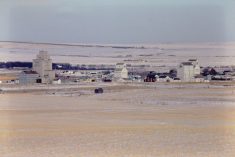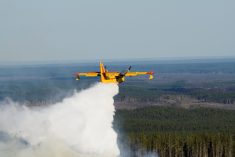I don’t know about anyone else but I have great confusion over anything to do with carbon credits and national/international Greenhouse Gas (GHG) reduction programs. Is there anything real here? Is there anything really happening?
I must admit anytime I see something related to carbon credits on an ag conference agenda immediately my head goes to that old fairy tale about the Emperor’s New Clothes — a lot of excitement over something that’s not really there.
In all fairness, there may be something real happening. It’s me. I just need to talk to a few farmers involved in the programs who can tell me they direct seeded all their crops, or they put annual cropland back into pasture and at the end of the year they received a $2,000 cheque (or whatever) for their carbon sequestration efforts. It will be my mission in 2019 to find these folks.
Read Also

Gentle treatments for pain in the neck
Heading toward year-end, people unknowingly tense up against the cold and busyness, causing neck pain that can often be treated with appropriate support and gentle mobility, athletic therapist Kathlyn Hossack says.
The reason I get confused — I was at a national forage conference in November with three very knowledgeable people on the agenda all talking about carbon credit programs and largely what I heard, in a fog of acronyms and carbon jargon, is that they attended many meetings with a lot of other knowledgeable people to talk about protocols and policy and procedure at a bureaucratic level. What I didn’t hear were any specific practices I as a farmer or rancher, at home, on the land, need to apply so I can earn carbon credits for my good efforts and put a few extra dollars in my pocket.
I have been listening to people talk about carbon credit programs for farmers for 10 or 15 years but it sounds like meetings are still on going to hammer out protocols and policies. Some provinces have some sort of programs working, others don’t.
Apparently Alberta has been a leader in the carbon credits business. And while I get the impression there was a fairly reasonable carbon offset program developed in 2007, subsequent governments finally smartened up and decided it was too simple, and further regulations were needed to make it more complicated.
The last I read those changes had a discouraging effect among producers — more paper work, more record keeping — to the point where some were predicting the “entire no-till offset program may soon be scrapped.” Part of the problem was that too many farmers have been practicing no-till farming for too long, so now the government was only interested in paying for “innovative” carbon sequestration methods. What comes to mind: “here is something that was working, so let’s break it.”
At the national and international level my confusion only deepens. The problem? There always seems to be another global summit dealing with climate change and the need to reduce greenhouse gas emissions. Targets are sets and almost immediately no one is meeting their targets, or in the case of the United States, they just pull out of the whole initiative completely.
I was recently reading where through the United Nations hundreds of world leaders and other climate change experts have been meeting annually for 25 years to discuss the need and urgency to reduce greenhouse gas emissions. But the last scientific report showed that global greenhouse gas emissions actually went up 1.4 per cent to hit a record high of 32.5 billion tonnes in 2017 and another record-breaking figure was expected for 2018. So much for reduction.
If that is correct, 25 years of discussion appear to have failed in changing the direction of this ocean liner. I suppose it is reasonably good for the hundreds of world leaders and climate change experts who get to gather at some of the nicest world locations and feel good about discussing a “very serious problem,” but it doesn’t appear those meetings are resulting in any progress. On the surface the meetings may be making it worse.
















